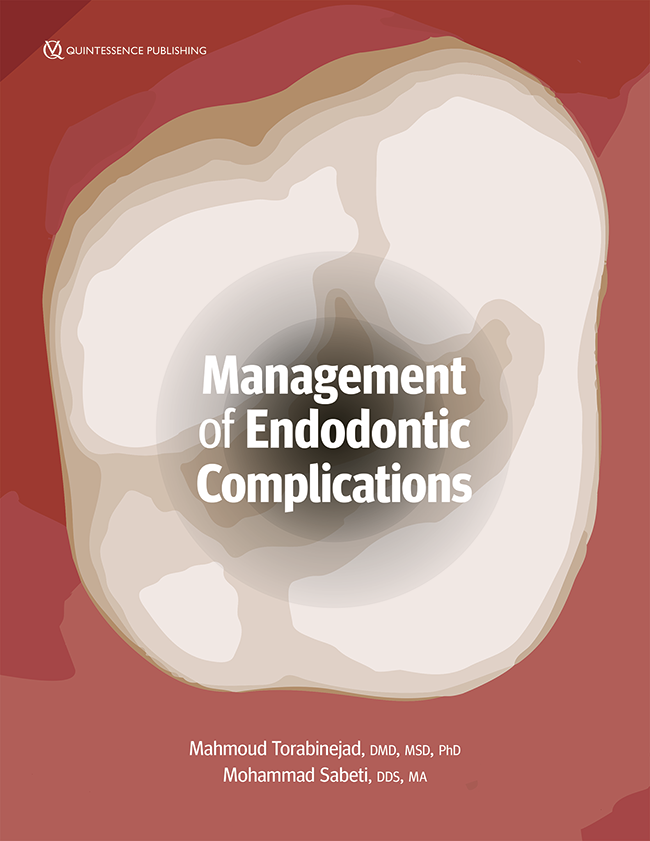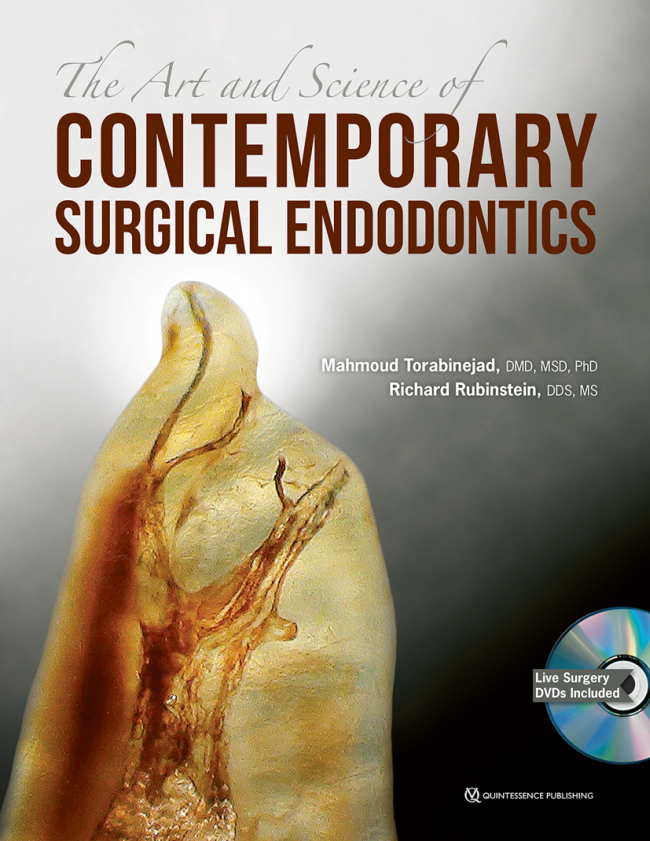ENDO, 1/2017
Seiten: 15-21, Sprache: EnglischSilvestrin, Tory / Torabinejad, MahmoudAim: Large apical openings are encountered as a result of pulp necrosis in immature teeth, apical resorption, or over-enlargement of the apical foramen. Cleaning, shaping, obturation and apical seal of root canal systems are essential for the success of root canal treatment. There is scarce data comparing coronal leakage of teeth prepared to different apical sizes and obturated with Mineral Trioxide Aggregate (MTA). The aim of this study was to investigate the effect of apical preparation size on the leakage of MTA obturated root canals.
Materials and Methods: A total of 125 extracted human teeth were divided into five groups each containing 25 samples and prepared to apical file sizes 30, 40, 50, 60 and 70. Twenty teeth served as positive and negative controls. Obturation was completed with grey MTA. Bacterial leakage was investigated after 120 days using Proteus vulgaris. Data was analysed using Independent-Samples Kruskal-Wallis test.
Results: The average time for leakage of apical preparation sizes 30, 40, 50, 60 and 70 were 58.5, 70.2, 64.8, 59.0 and 55.2 days, respectively. No significant differences in leakage were observed between apical preparation sizes 30 to 70.
Conclusions: Based on the present results, it appears leakage of MTA filled root canals is largely unaffected by varied apical size. MTA appears to seal well regardless of the apical size and is considered the material of choice for obturation of larger sized apices.
Schlagwörter: proteus vulgaris, root canal obturation, silicates
Quintessence International, 5/2016
DOI: 10.3290/j.qi.a35525, PubMed-ID: 26824086Seiten: 373-378, Sprache: EnglischSilvestrin, Tory / Torabinejad, Mahmoud / Handysides, Robert / Shabahang, ShahrokhObjectives: There are no data comparing coronal leakage of teeth prepared to different apical sizes and obturated with gutta-percha and sealer. The aim of this study was to investigate the effect of apical preparation size on the leakage of obturated root canals. Large apical openings are encountered as a result of pulp necrosis in immature teeth, apical resorption, or over-enlargement of the apical foramen. Complete cleaning, shaping, obturation, and apical seal of root canal systems are essential for the success of root canal treatment.
Method and Materials: One hundred twenty-five extracted human teeth were divided into groups containing 25 samples each and prepared to apical file sizes 30, 40, 50, 60, and 70. Twenty teeth served as positive and negative controls. Obturation was completed with gutta-percha and sealer via warm vertical compaction. Bacterial leakage was investigated after 112 days using Proteus vulgaris. Data were analyzed via independent-samples Kruskal-Wallis test.
Results: The average time for leakage of apical preparation sizes 30, 40, 50, 60, and 70 were 57.5, 52.4, 47.2, 37.5, and 28.4 days, respectively. Significant differences in leakage were observed between apical preparation sizes 70 versus 30, 70 versus 40, 70 versus 50, as well as 60 versus 30. A trend for more leakage occurred when apical preparation sizes exceeded size 60.
Conclusions: Based on these results, it appears leakage of gutta-percha and sealer as obturation materials increases when apical preparation size exceeds 60. Consideration should be given to using sealing materials other than gutta-percha and sealer when the apex size exceeds 60.
Schlagwörter: bacterial leakage, gutta-percha, microleakage, open apex, Proteus vulgaris, trauma
ENDO, 3/2015
Seiten: 169-175, Sprache: EnglischChoi, Daniel / Lee, Ga Yeun / Choi, Alvina / Torabinejad, MahmoudObjective: The purpose was to first identify if there was a difference between the root canal morphology of maxillary first molars of Malaysians and Caucasians by using horizontal sectioning. Secondly, it was to see if there was a difference between the root canal morphology of maxillary first molars of Malaysians and other Eastern Asian populations found in the literature.
Methods: Extracted maxillary first molars were collected from a Caucasian population (n = 133) and a Malaysian population (n = 139). The mesiobuccal root was horizontally sectioned. Data was taken from the apex, 1 mm coronal to the apex, the apical one third of the root, the apical middle twothirds of the root, and the apical five-sixths of the root. Canal configuration was classified according to Vertucci's classification.
Results: The greatest difference between the two populations was that of Type 1 (Caucasians: 42.86%, Malaysians: 34.56%) and Type 3 (Caucasians: 3.76%, Malaysians: 7.35%). No statistical difference was found when comparing each Vertucci type between Caucasians and Malaysians (P = 0.799). The total percentage of two mesiobuccal canals was 57.14% for Caucasians and 65.44% for Malaysians. No statistical difference was found (P = 0.171). No statistical difference was found between the total percentage of two mesiobuccal canals between Malaysians and findings in previous literature (P > 0.05).
Conclusion: There was no statistically significant difference between the incidence of the second mesiobuccal canal of maxillary first molars of Caucasian, Malaysian and other Eastern Asian populations.
Schlagwörter: canal configuration, cross section, Malaysian, maxillary first molar, mesiobuccal canal, root canal anatomy






